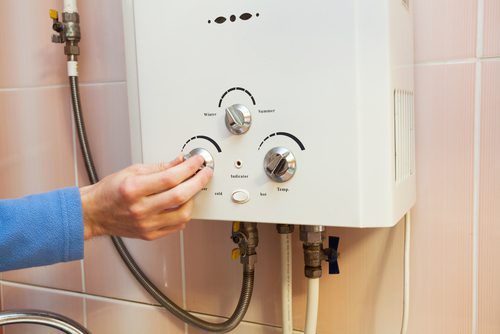What to Maintain Your Home's Hot Water System Properly
What to Maintain Your Home's Hot Water System Properly
Blog Article
Everybody will have their own thoughts in relation to Tips on Maintaining a Water Heater.

Hot water is crucial for daily convenience, whether it's for a refreshing shower or washing recipes. To guarantee your hot water system runs efficiently and lasts longer, routine upkeep is crucial. This short article supplies useful tips and insights on just how to keep your home's hot water system to prevent disturbances and costly repair services.
Intro
Maintaining your home's hot water system might appear daunting, however with a couple of straightforward steps, you can ensure it operates smoothly for many years ahead. This overview covers everything from comprehending your warm water system to do it yourself maintenance suggestions and understanding when to call professional assistance.
Value of Keeping Your Warm Water System
Routine maintenance not only expands the life expectancy of your hot water system but additionally guarantees it runs successfully. Overlooking upkeep can result in decreased effectiveness, higher energy expenses, and even early failing of the system.
Signs Your Warm Water System Needs Maintenance
Recognizing when your hot water system needs interest can protect against major problems. Keep an eye out for indications such as irregular water temperature, strange noises from the heater, or rusty water.
Flushing the Water Heater
Flushing your hot water heater eliminates debris build-up, enhancing efficiency and prolonging its life.
Checking and Replacing Anode Rods
Anode rods protect against deterioration inside the container. Checking and changing them when worn is critical.
Facility Concerns Needing Expert Help
Instances consist of significant leaks, electrical troubles, or if your hot water heater is constantly underperforming.
Regular Specialist Upkeep Advantages
Professional upkeep can include comprehensive evaluations, tune-ups, and making sure compliance with safety criteria.
Evaluating and Changing Temperature Setups
Changing the temperature setups makes certain ideal performance and safety and security.
DIY Tips for Maintenance
You can do numerous maintenance tasks on your own to keep your hot water system in leading problem.
Checking for Leakages
Regularly examine pipelines and connections for leaks, as these can lead to water damages and higher costs.
Comprehending Your Hot Water System
Prior to diving into upkeep jobs, it's practical to understand the standard components of your warm water system. Usually, this consists of the water heater itself, pipelines, anode rods, and temperature level controls.
Regular Monthly Upkeep Tasks
Regular regular monthly checks can help capture small issues before they rise.
Evaluating Stress Relief Valves
Checking the stress safety valve ensures it works appropriately and avoids extreme stress buildup.
Protecting Pipelines
Protecting warm water pipelines decreases warmth loss and can conserve energy.
When to Call an Expert
While DIY upkeep is beneficial, some problems call for professional competence.
Verdict
Regular upkeep of your home's warm water system is important for performance, long life, and cost savings. By complying with these pointers and understanding when to look for specialist help, you can guarantee a trustworthy supply of warm water without unexpected disruptions.
How to Maintain an Instant Hot Water Heater
Before tinkering with your hot water heater, make sure that it’s not powered on. You also have to turn off the main circuit breaker and shut off the main gas line to prevent accidents. Also turn off the water valves connected to your unit to prevent water from flowing into and out of the appliance. 2. When you’re done, you have to detach the purge valves’ caps. These look like the letter “T†and are situated on either side of the water valves. Doing so will release any pressure that has accumulated inside the valves while at the same time avoid hot water from shooting out and burning your skin. 3. When the purge valves’ caps are removed, you have to connect your hosing lines to the valves. Your unit should have come with three hoses but if it didn’t, you can purchase these things from any hardware or home repair shops. You can also get them from retail stores that sell water heating systems. Read the user’s manual and follow it to complete this task properly. When the hosing lines are connected, open the purge port’s valves. 4. You should never use harsh chemical cleaners or solutions when cleaning your unit. Make use of white vinegar instead. It should be undiluted and you’ll probably use about 2 gallons. 5. Now flush your water heater. This task should probably take about 40 minutes. We can’t give you specific directions for this because the procedure is carried out depending on the type, model and brand of your heater. With that being said, refer to the user’s manual. 6. When you’re done draining the unit, you have to turn off the purge port valves again. Remove the hosing lines that you earlier installed on each of the water valves. Put the valve caps (purge port) back in their respective places and be very careful so as not to damage the rubber discs that are found inside these caps. 7. Now that everything’s back in place, check your user’s manual again to find out how to reactivate your water heating system. 8. Once it is working, turn one of your hot water faucets on just to let air pass through the heater’s water supply pipes. Leave the tap on until water flows smoothly out of it. https://www.orrplumbing.com/blog/2014/september/how-to-maintain-an-instant-hot-water-heater/

I am very fascinated by How to Maintain a Hot Water Heater in a Few Simple Steps and I'm hoping you appreciated the piece. Those who enjoyed reading our blog posting kindly be sure to pass it around. Thank you so much for going through it.
Hire A Pro Report this page